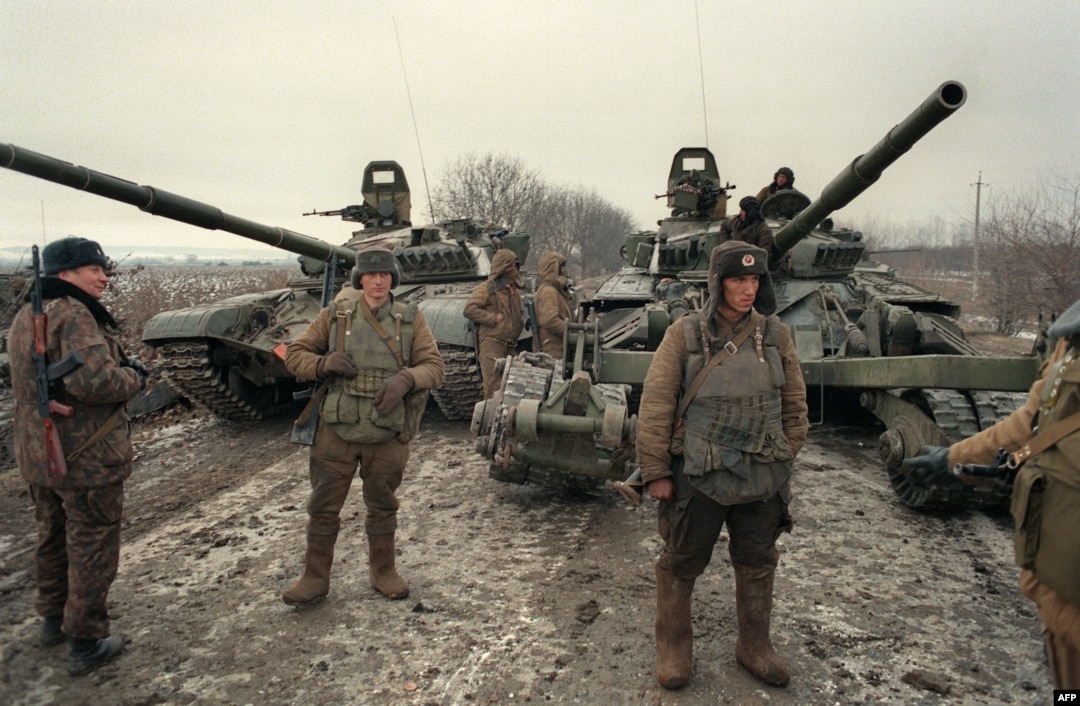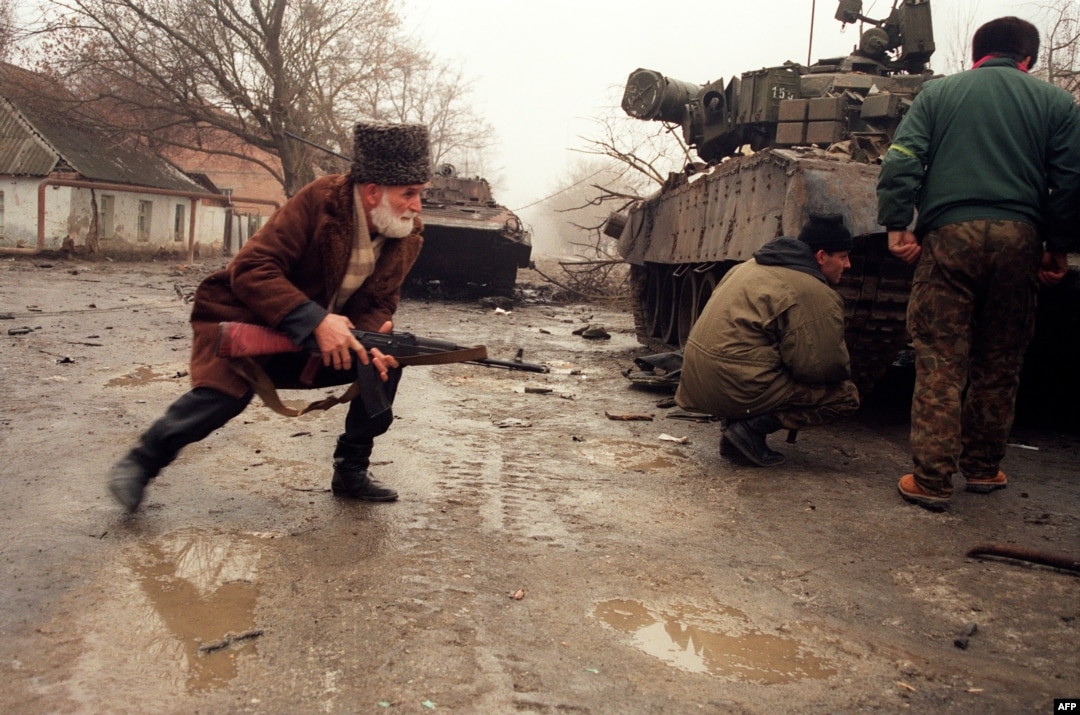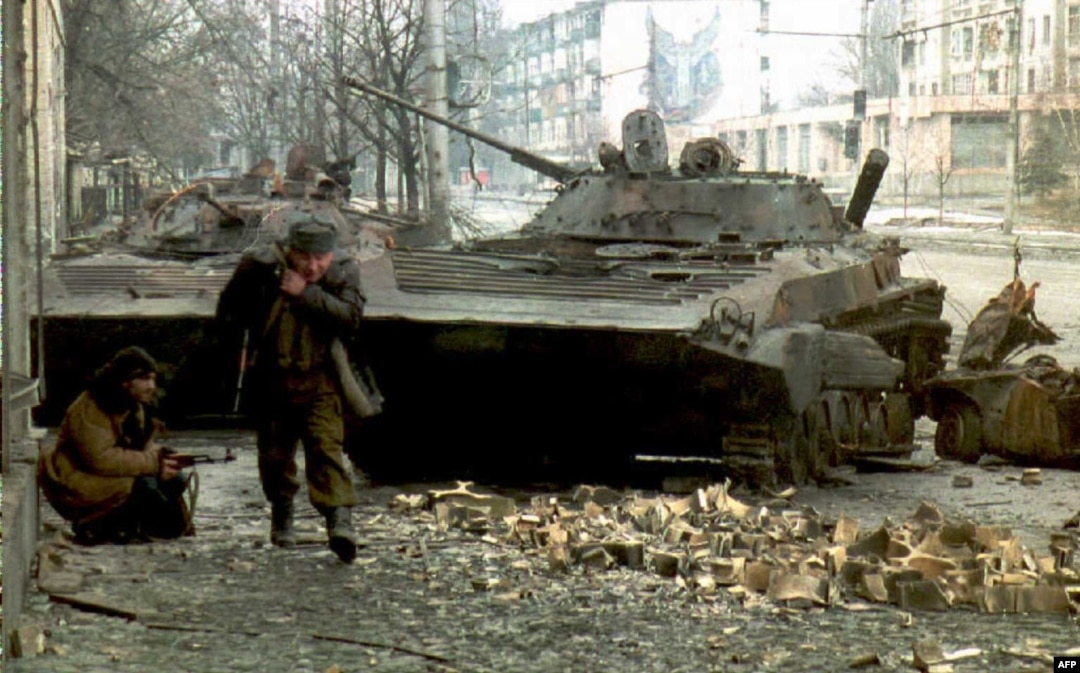Chechnya At War

A Chechen fighter perches atop a statue of Lenin. In the aftermath of the 1991 collapse of the Soviet Union, Chechnya declared its independence from Russia.

Russian troops mass near Grozny. Fears that Chechnya's independence could lead to a "domino effect" and fragmentation of the newly formed Russian Federation led Moscow to try to retake Chechnya by force. A ground assault begins on December 11, 1994.

A Chechen volunteer takes cover behind a Russian tank during street fighting in Grozny. The first advances into the city were a disaster for ill-prepared Russian forces, who face a determined resistance.

Chechen fighters near destroyed Russian tanks on January 10. In the first stages of the war, one column lost 105 out of 120 tanks and armored personnel carriers.
Chechen fighters engage in a street battle.
Chechens view the bodies of Russian soldiers on January 1, 1995. After hundreds of Russians died in the initial assault, Russian forces change tactics.
A local woman steps out of her home, and near a dead body. From points around the city, Russian forces bombard Grozny. Thousands of rounds of artillery rain down on the Chechen capital.
An elderly woman leaving her home during a Russian artillery bombardment. Many ethnic Chechens are able to shelter with relatives in outlying villages. For some of the recently settled ethnic Russians in Grozny, however, there is nowhere to flee.
Under daily bombardment, Grozny becomes a vision of hell.
After weeks of bombardment, Chechen fighters retreat from Grozny and move into the mountains. This photo, taken on February 6, shows Russian armor patrolling the city.
Russian soldiers in Grozny sit near a portrait of Lenin on April 4, 1995.
Russian special forces storming a Chechen village in May, 1996. After Chechen fighters melt into the mountains and villages of Chechnya, the war enters a brutal new phase.
A tank firing its machine gun near a Chechen village.
As the guerrilla war drags on, a jihadi trail forms with foreign fighters entering Chechnya to fight alongside the Muslim Chechens.
June 14, 1995 -- an event that shocks the world. In the Russian city of Budennovsk, Chechen fighters storm a maternity hospital and take 1,800 pregnant women, new mothers, and doctors hostage.
An unidentified Russian deputy talks with a Chechen fighter at the entrance of the Budennovsk hospital. The Chechen hostage-takers demand an end to the war, and direct talks. Russian President Boris Yeltsin calls the events "unprecedented in cynicism and cruelty."
When Russian forces attempt to storm the hospital, around 150 people are killed, and the attack is repulsed. Russia agrees on a cease-fire, and the war in Chechnya is put on hold.
Chechen civilians in Grozny. The capital has become a ruin, reminiscent of the wrecked cities of Europe after World War II.
On August 30, 1996, a cease-fire agreement is signed between Russian and Chechen representatives.
A man walks among the ruins of Grozny in 1997. Part of the peace agreement held that the status of Chechnya would be determined in 2001. But as Chechnya entered a lawless and violent period following the cessation of the war, it would turn out that peace with Russia was only temporary. Two years after this picture was taken, a second brutal war was launched that would ultimately bring Chechnya back under Russian control. The man who drove the second Chechen war would become Russia's new president, Vladimir Putin.

